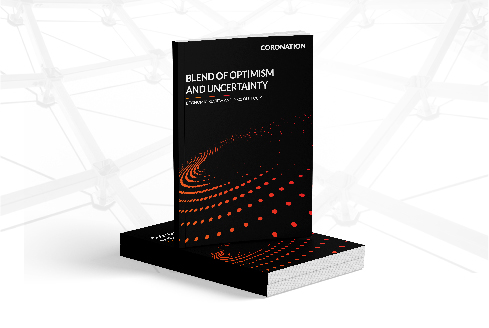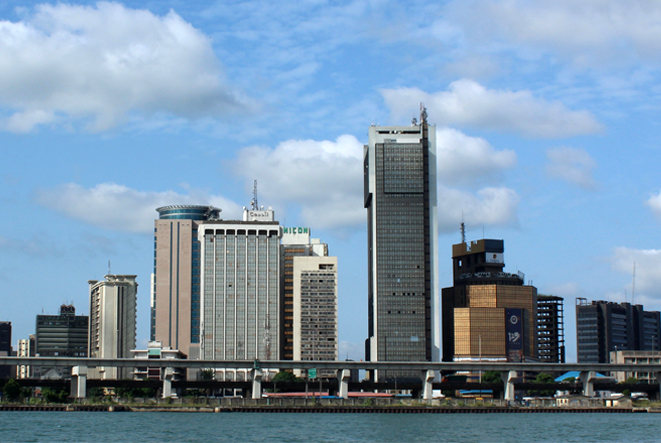At the end of last week the 2019 Nigerian Insurance Industry report ‘From the Lagoon to the Ocean’ was released by Coronation Research, a leading research house in Nigeria. The report takes a critical look at Insurance industry, outlining the current state of the industry and the opportunities that exist for growth. To find out more we spoke with Guy Czartoryski, Head of Research at Coronation Merchant Bank.

Q: In your recent report on the Nigerian Insurance sector you talk about the extreme lack of penetration and the three key opportunities you see present for growth. Cooperation of government and all regulators, Micro-Insurance and education of the market, and finally technology.If we look at the first area of cooperation of government and all regulators (insurance, telecom, banking). Why is this key? Why not just leave it all up to the insurance regulators?
A: To begin with, consider that the National Insurance Commission (NAICOM) has a difficult job. Imagine a situation where you are regulating 59 insurance and reinsurance companies. Some of these companies do not have much capital, some are making losses, others might not comply with regulations.
Most of the time NAICOM is, in all probability, looking after the difficult cases and resolving them. It is therefore spending disproportionate effort on the weakest companies. In such a situation you need to ask how to fix the problem in a strategic way. And the answer it to raise the minimum capital thresholds because that stabilizes the financial outlook of the industry and is likely to reduce the number of players at the same time.
This much NAICOM can do on its own. There are other factors working in its favour. If NAICOM had done this five years ago the available data and technology for industry expansion were not as developed as they are now. Today there are 38 million bank verification numbers in Nigeria, which is a very important starting point. There are over 170 million registered mobile phone lines (though not the same number of customers). Technological platforms to service several millions of customers are available.
However, it can be argued that the industry needs a deeper level of regulatory cooperation than it has at present. One of the results of our study was to show that the potential of allowing more bancassurance, or more involvement with telecom distribution, could take insurance penetration from the current level of 0.31% (total industry gross premiums divided by nominal GDP) to ten times this level over eight-to-ten years. That would benefit all parties: insurance companies, banks and telecom companies. It is a pretty easy concept to sell.
We have looked across at other insurance markets with similar GDP per capita, such as India and Kenya. Insurance penetration in India is 3.69%, in Kenya it is 2.37%. In Ghana total industry gross premiums were rising in US dollar terms between 2013-17 when in Nigeria they were falling. We are skeptical of cultural explanations for why Nigeria’s insurance industry is not performing. Nigeria’s total gross premiums in inflation-adjusted or US dollar terms have barely grown in ten years. The reasons are: lack of capital; lack of scale; too many companies; not enough regulatory cooperation.
That last point is controversial, but the evidence to back it up is strong. In India the government backed a roll-out of insurance on a significant scale, using state insurance companies. Micro-insurance was rolled out as a priority. In South East Asia a number of different methods have been used, including bancassurance and mobile telephony. In Ghana mobile telephony plays a key role. In our view the regulations governing bancassurance and distribution with mobile telephony in Nigeria are more restrictive than in other countries. Yet the strength of bank and mobile telecom distribution channels are undoubted, and they have been used successfully elsewhere. There is the argument for the regulators to work closely together.
Q: Can you tell us about the strategic implication of the NAICOM reform?
A: We took a sample of 38 of the 59 insurance companies in Nigeria, those for which sufficient information is available, and calculated how NAICOM’s reforms would affect them as things stood in May this year when NAICOM issued its key circular. The answer was that only 37% of companies met NAICOM’s new capital requirements while a further 25% reached at least 75% of NAICOM’s new capital requirements. We reason that if an insurance company reaches 75% of NAICOM’s capital requirement then it may find it possible to raise a small amount of extra capital, or retain earnings, in order to comply in full. So, we think that 62% of our sample do not face significant difficulties.
And then there are the others. 11% only met 50% of the capital requirement (but not as much as 75%) and 27% did not meet 50% of the capital requirement. This means that a number of companies are going to have to raise capital. We already know of eight companies raising new capital and we expect more to come. However, some companies will not be able to raise capital on their own. The way forward for them will be to merge with other companies. But even then, we expect at least some companies to be eliminated altogether. We think the number of companies will be reduced from 59 to around 25.
The obvious comparison here is with Nigeria’s banking reforms of 2004, which raised sharply the minimum capital level of banks and reduced their number from 89 to 25. Something similar is happening in the insurance industry. The banks, as is well known, then went into a period rapid development, with total gross loans growing at a compound annual growth rate, in inflation-adjusted terms, of 26.9% between 2004-09. So, the strategic implication for the insurance industry is to have, from mid-2020 onwards, a much stronger capital base, far fewer companies, and the potential to grow rapidly.
Of course, we do not know exactly the shape of the insurance industry that will emerge in mid-2020. However, we can make some general observations. First, it is likely to have between six and eight foreign-backed (if not majority foreign-owned) leading insurance companies. This is significant because of the experience they have in rolling out insurance in South East Asia and India. Second, it is likely to have between six and eight leading wholly indigenous Nigerian insurance companies. So, the leaders will likely be evenly foreign and locally-owned.
Q: What can insurers do to increase their profitability and RoE?
A: In our report we look in detail at the profitability of Nigeria’s insurance companies. The return on equity over time is generally lower than the risk-free rate, in other words the internal rate of return is less than what you would earn on a T-bill. And if the returns do not exceed T-bill yields then they get nowhere near the cost of equity. So, it not a good situation and not one in which it is easy to make the business case for raising fresh capital, unless you can argue that there is significant growth ahead.
We also look at the loss ratios of Nigerian insurers so see whether their underwriting ability, sometimes known as profitability of risk transfer, is at fault. The surprising thing, perhaps, is that the loss ratios of Nigerian insurers are not outside the bounds of international norms. There are differences between sub-sectors (Composite, Non-Life and Life) but in general the loss ratios do not seem to be the problem.
The problem comes with expense ratios. There are very high and well beyond what we consider to be normal in the global industry. But perhaps this should not be surprising. After all, we are talking about an industry which has barely grown, in real terms, over the past ten years. Fixed costs are difficult to carry when business is not growing. The companies have problems reaching the scale where their fixed costs make sense.
Adding the loss ratios and the expense ratios together comes to the combined ratio, and the industry aims for a ratio of less than 100%. Most Nigerian insurance companies exceed 100% most of the time. There are some remarkable exceptions, but in general it is not a very profitable industry. Since it is not underwriting that is to blame (in most cases) the real problem comes from lack of scale. And lack of scale is hardly surprising when, over the long term, there has been almost no growth.
Q: How will micro-insurance products help increase awareness?
A: Insurance is about trust. In any market you begin with a skeptical audience. As noted above, we do not think cultural reasons explain the lack of insurance penetration in Nigeria. The role of micro-insurance is to provide insurance at low cost to many customers and, in the process, familiarize the market with the concept and operations of insurance. A reliable claims history is important here. One way of doing this is to bundle basic accident cover with other services, such as banking or telecoms services, so that the cost is not noticed and therefore goes unchallenged.
The key thing about micro-insurance is that it is widely seen as meeting a developmental goal. If you take household economics, and the devastating effects that personal accidents can have on them, then micro-insurance becomes important to achieving economic security. Once the market understands that it is buying economic security, then selling insurance becomes easier.
Q: What are the key lessons from India that insurers can learn?
A: Not every market has the structural advantages that India has. There is a large network of state insurance companies, as well as state banks, to rely on. The firstpoint about India is that the regulator is called the Insurance Regulatory and Development Authority of India (IRDAI), the key word being Development. So the regulator works as a development body, not just a referee. The next lesson from India is that the public sector spearheaded the development of insurance but the private sector benefited from the market education that this brought.
Q: How can technology assist insurers in reducing cost, boosting awareness and increasing their RoE?
A: Different markets develop insurance in different ways. In Nigeria all the ingredients are there in terms of technological datasets and operating platforms. And, from the middle of 2020 there will be a re-capitalized industry that will have undergone a process of consolidation. Whatever technology, or mix of technologies, will be adopted cannot be known. But all the raw elements for a transformation of the industry are in place, so NAICOM’s reforms are coming at a good time.







